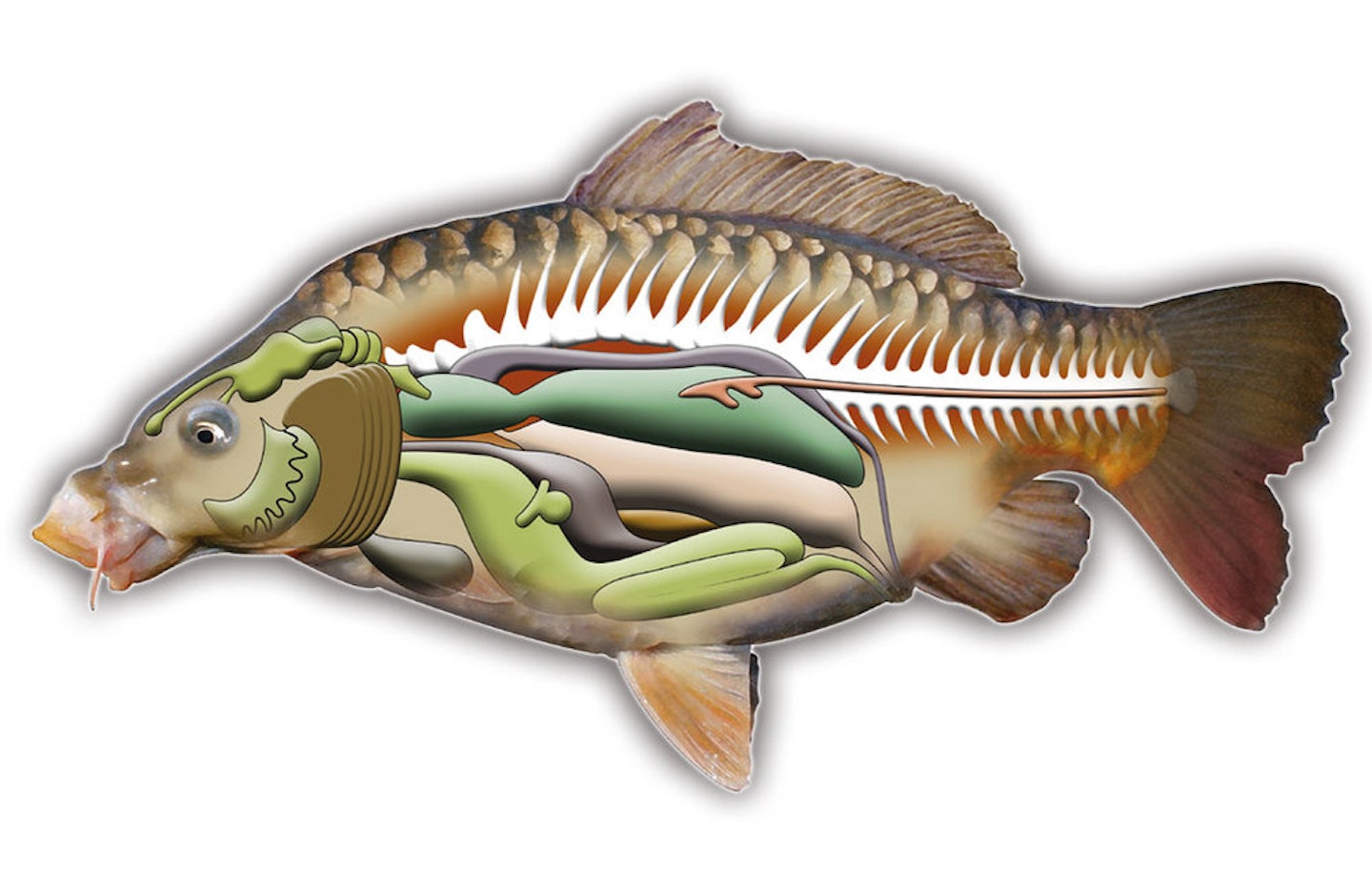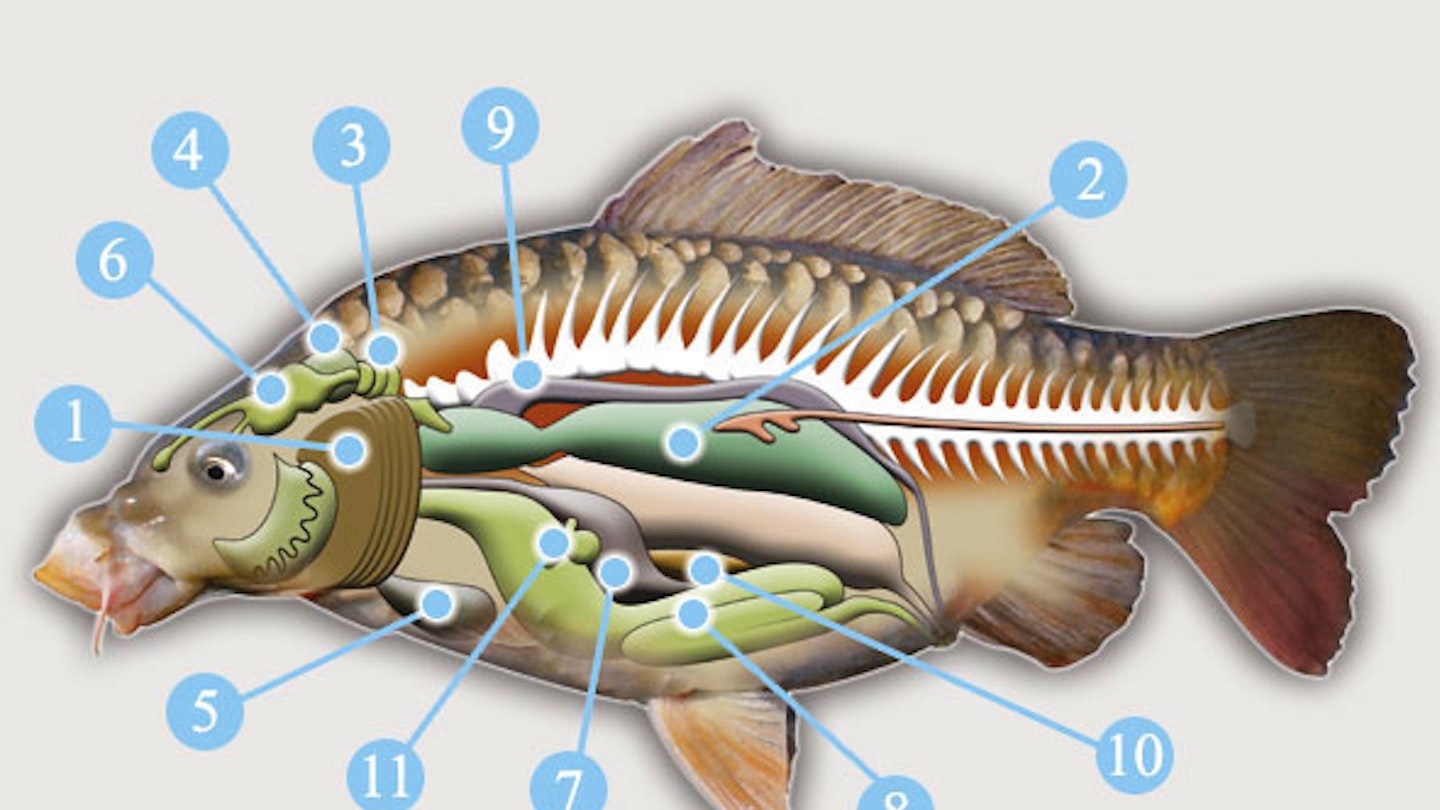One of the most encouraging traits of modern fishing is the greater interest anglers have in looking after the fish they catch.
But to ensure the fish you catch are released fit and strong, here is the definitive guide to a fish's internal organs so you can avoid causing any accidental damage.
inside.jpg
1 - Gills
Gills of fish are for breathing. The gills sit behind the gill cover and, in a healthy fish, appear a bright red colour. The gills are extremely efficient at extracting oxygen from water allowing the fish to function normally. They can extract over 80% of the oxygen in the water passing over them (average person is around 4%). This efficiency comes at a price however. To get the oxygen in, the tissue is very thin, typically just seven thousandths of a millimetre. This makes them very fragile so the gill cover protects them from damage. Rough handling can easily damage them so anglers should try and avoid touching or handling a fish around the gills. The oxygen the fish extracts is used to ‘burn’ the food it has digested to provide the energy to survive.
2 - Swim bladder
This organ stores gas inside the fish. Its main function is to counterbalance the weight of the rest of the fish’s body. This means the fish doesn’t have to swim to stay in the water column. It effectively makes the fish neutrally buoyant. This means the fins can be used to control position with slow precise movement rather than constantly having to work to keep itself off the bottom.
3 - Weberian Ossicles
These are found only in the carp-like fish. They are bone extensions of the spine and connect the swim bladder to the fish’s ears. This connection means that the fish can hear a much wider range of sound frequencies. Fish like perch and pike don’t have these and so have less effective hearing.
4 - Ears
The ears of fish are internal with no connection to the outside world. The reason for this is simply that they don’t need to. Sound travels much better in water compared to air so the sound easily passes into the fish where their ears can detect it. Fish hear much lower pitch sounds than people but are not as good at hearing high pitched sounds. You should remember this when you’re trampling about on the bank or banging in bank sticks!
5 - Heart
This is a blood pump, just like in people. In fish, blood leaves the heart and goes directly to the gills. So when the blood arrives at the gills it is at high pressure and flowing fast. This helps to make the gills efficient in carrying oxygen and food, as well as transporting waste chemicals. The blood then travels away from the gills carrying oxygen to other body organs. However, it also means that if the gills are damaged the blood loss is quite rapid – so avoid handling fish near the gills. The heart sits under the gills usually in the V-shape formed between the two gill covers. This location ensures the heart doesn’t have to pump blood far to get to the gills.
6 - Brain
Fish brains are not massive but perfectly functional for what the fish needs. They are particularly well developed for processing sensory information such as vision, smell and sounds.
7 - Liver
The liver of most of our coarse fish is usually quite big and combines the liver and pancreas together. This organ regulates and processes the digested food. It can also break down harmful chemicals. In coarse fish it is usually connected closely with the intestine. If it gets damaged it means the fish can’t process food properly and they can waste away and die. In coarse fish fed on trout pellets it can also get quite fatty. As yet however, there is no real evidence that this does the fish any harm.
8 - Stomach and Intestine
Predatory fish have stomachs to process the ingested prey. Fish like carp and roach don’t have a true stomach and just have a long intestine. This is because they feed more frequently than predators and their natural food often comes in smaller bits. This means they don’t need a stomach to start the digestion process. Food travels down the gut and is soaked with digestive chemicals to break it down. It’s then absorbed by the intestine and transported by blood to the liver or is stored for later use.
9 - Kidney
A fish’s two kidneys are merged into one and sit right under the spine. The kidney’s main function is to act as a filter and is well developed in all freshwater fish. It basically filters the blood and allows the fish to get rid of all the water that leaks into its body across the gills and through the intestine. The rest of the outside skin of the fish is generally pretty watertight unless it gets damaged. If the kidney gets damaged by disease or pollution, the fish retains water and will bloat up because it can’t effectively get rid of the water.
10 - Spleen
A dark red organ usually located around the middle of the fish. This organ makes and stores blood and also helps to fight off infections.
11 - Gall Bladder
Produces bile which is secreted into the intestine to neutralise acid from the stomach and also helps digest fats in food. It is usually bright yellow or green depending on the colour of the bile it produces.

